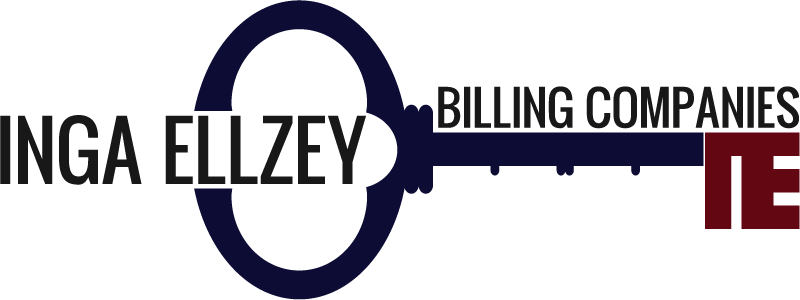You’ve heard telemedicine is the future. What’s next? How do you make sure you set everything up correctly? We’re breaking down your requirements, equipment and reimbursement guidelines.
First let’s recap your reimbursement and coding guidelines:
| Code | Time Spent | Reimbursement |
| 99441 | 5-10 minutes | $74.65* |
| 99442 | 11-20 minutes | $120.45* |
| 99443 | 21-30 minutes | $170.44* |
*Amounts vary slightly by state or insurance carrier
The Place of Service code has changed too.
Medicare says to use Place of Service 11 for Medicare claims. On March 30th 2021, CMS released an interim rule with other changes.
When billing Telemedicine claims for services rendered on or after March 1, 2020, and for the duration of the COVID-19 emergency declaration:
- Include Place of Service (POS) equal to what it would have been had the service been furnished in person (e.g., 11 for Office)
- Append modifier 95 to indicate the service took place via Telemedicine
Note: The CR modifier is not required when billing for Telemedicine services.
Documentation Requirements
- Provider location
- Identify method of Telehealth (e.g., secure two-way interactive video connection, phone call, etc.)
- Name each clinical participant and their roles and actions (e.g., applicable when member presents at a clinic with MD at another location.)
- Patient location (e.g., clinic [city/name], home, etc.)
- Time spent in medical discussion to support the procedure code billed, including start/stop times. This only applies to the time spent with the provider of care; not clinical staff such as MAs, nurses, techs, etc.
- Patient consent
- Providers must document confirmation that a patient agrees to receive services via Telehealth.
- Verbal consent to receiving Telehealth is an acceptable method but must be documented in the medical record (required on an annual basis for Medicaid).
- Other documentation requirements are the same as a face-to-face encounter
- Reason for visit
- Exam, if performed with handheld camera
- Diagnosis
- Treatments
- Prescriptions
- Time Spent (again this is only the time spent with the provider of care)
Electronic Medical Record
Your Electronic Medical Record should be able to connect with the telemedicine visit making it easy to document in real time. Contact your EMR provider to obtain help on utilization of their system with the telemedicine technology.
What do you need to add Telemedicine to your practice?
- Access to broadband connectivity
- Internet to transmit audio and video data
- Imaging technical support
- A handheld exam camera
Most practices already have everything in place except maybe for the handheld camera.
Equipment Needs
High Quality Webcam
Video quality is a significant component of a productive telemedicine visit. A high-quality video ensures an accurate assessment of your patient. In dermatology where a physical examination may be necessary this equipment assures quality outcomes.
Telemedicine Carts
Many telemedicine practitioners use a telemedicine cart in their offices. This telemedicine equipment consists of a mobile frame and storage system to store cameras, monitors, keyboards, computers, and mobile medical devices. The carts sometimes look similar to standing work desks with computers attached at the top and wheels at the bottom.
Telemedicine Software
Telemedicine providers usually have special software installed on their computers. This software sometimes requires equipment like data storage hardware or servers. However, for basics, it’s best to look for an integrated solution that has everything you need. 4.
Reliable and Fast Internet
Internet speed and bandwidth are imperative to sending and receiving patients’ medical data. An appropriate bandwidth makes sure your internet services are reliable in your pursuit of telemedicine.
Your internet provider will be able to configure your network to serve the dual communication system that telemedicine requires.
A Backup System
While a good internet connection is necessary for telemedicine services, sometimes even the most reliable networks can fail. Use a backup system to protect your telemedicine services from unexpected data outages. Investing in a backup network is something any healthcare facility should look into. Again, your IT vendor can take care of this for you.
Tablets
Tablets are the perfect tool for any telemedicine provider to invest in because of their versatility in any practice. They can be used as a digital clipboard to store detailed notes on patients’ health and are easily transferred to electronic health record systems.
Handheld Exam Cameras
Patient exam cameras have a few distinct features:
- Built-in lighting that surrounds the lens,
- The ability to “freeze” or “pause” the video,
- An inability to save images directly to the camera
- A minimalistic interface.
There are various products that share common elements beyond the video functions at a cost.
Cost of Telehealth Hardware
Dermatologists looking to expand their services to include telemedicine certainly want to know about the costs associated with this addition to their practice. They wonder if the revenue opportunities of telemedicine outweigh the initial investment.
The good news is that you don’t need to invest significantly immediately. Your specific needs of equipment depend on multiple factors such as the size and location of your practice, specialization, and staff-patient ratio.
The most crucial consideration for telemedicine is your internet bandwidth, as discussed previously. It would be best to have a reliable and consistent bandwidth with high upload and download for eventful times. Most practices already have this. However, it’s best to check with your Internet service provider with a commitment to reliable service.
The specific medical devices you need depend on the specialties you offer with telemedicine. You can purchase what you need to get started for basics which range from $1500-$10,000 and include examination cameras. You can add additional devises as needed or if needed. No matter the costs, they are well worth the investment.
For more information about our dermatology billing services contact us via our website.
Read more from our published resources:
Where is your Money Hiding?
It’s Time to Recall Your Skin Cancer Patients
A Surefire Way to Increase Practice Income and Reduce Overhead in 2022

